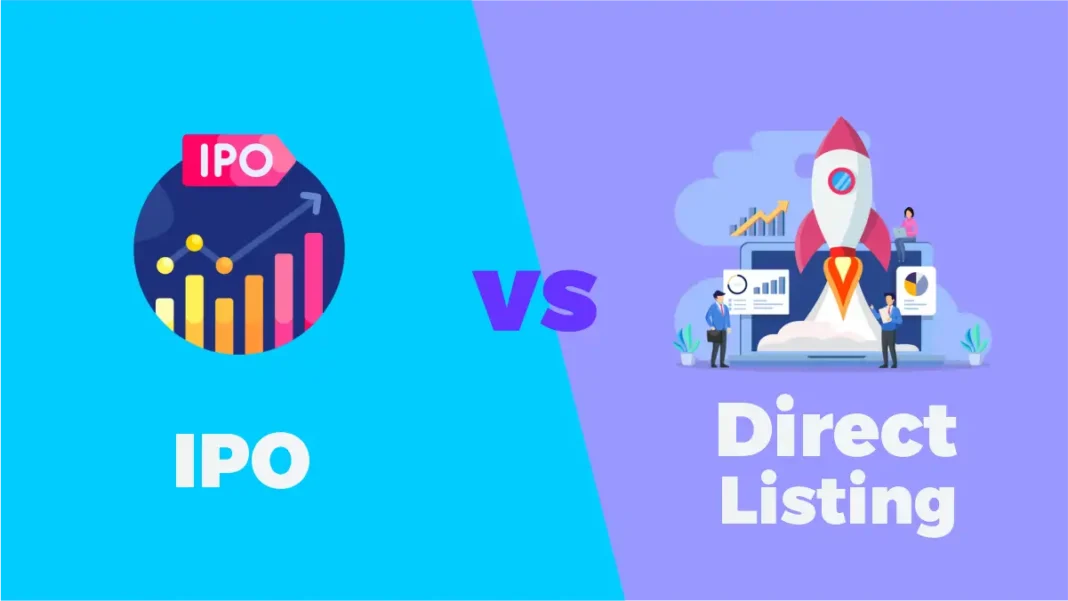In today’s dynamic financial world, companies often ask: “Is IPO necessary?” or should they opt for a direct listing instead? Understanding IPO vs Direct Listing has become essential – not just for C-suites deciding how to go public, but also for investors navigating a shifting IPO calendar and evolving listing options. This comprehensive guide unpacks both paths – Initial Public Offerings and the Direct Listing Process – explores their distinct mechanisms, costs, and strategic implications, and highlights real-world trends from 2024–2025. We’ll walk you through everything from NYSE and Nasdaq roles to recent IPOs and actionable advice, culminating in a practical FAQ section.
Here’s a video highlight that succinctly explains the difference between IPOs and direct listings, featuring a recent comparison (2025):
1. Understanding the Basics: IPO Meaning & Direct Listing Process
Initial public offerings (IPO meaning) involve a private company issuing new shares to raise capital, guided by underwriters and marked by careful pricing strategies. The IPO often involves roadshows, underwriting fees, and a controlled listing that may include lock-up periods and structured investor access.
Conversely, the Direct Listing Process allows a company to go public without issuing new shares or engaging underwriters. Existing shareholders – founders, employees, and pre-IPO investors – sell directly on exchanges like the NYSE or Nasdaq. Pricing emerges organically from supply and demand at market open ( Bankrate).
2. Step-by-Step Comparison: IPO vs Direct Listing
Underwriting & Pricing
- IPO: Underwriters guide pricing via roadshows and book-building; they also provide investor credibility and pricing stabilization (KU Business, SoFi).
- Direct Listing: No underwriters – pricing is determined in real time by market forces, leading to more transparent but potentially more volatile outcomes (Carta, Donnelley Financial Solutions (DFIN)).
Share Issuance & Dilution
- IPO: Creates and sells new shares, which raises capital but dilutes existing ownership (Carta, Wikipedia).
- Direct Listing: Only existing shares are sold – no dilution, maintaining shareholder control (Carta, Donnelley Financial Solutions (DFIN)).
Lock-Ups & Liquidity
- IPO: Traditional lock-up periods of 90–180 days restrict insider selling for initial stability (KU Business, Donnelley Financial Solutions (DFIN)).
- Direct Listing: No lock-up applies; insiders can sell immediately, enhancing liquidity but increasing exposure to volatility (Bankrate, Donnelley Financial Solutions (DFIN)).
Cost & Speed
- IPO: Expensive – underwriting fees range between 4%–7%, plus marketing and legal costs (KU Business, Donnelley Financial Solutions (DFIN)).
- Direct Listing: Significantly cheaper – typically only 0.5%–1% in costs, and faster to execute since no roadshow is necessary (Carta, Donnelley Financial Solutions (DFIN)).
3. Strategic Considerations: When Each Path Works Best
Raise Capital vs Liquidity
- Use IPO if you need fresh capital to scale operations.
- Choose a Direct Listing if your business is cash-rich and existing shareholders seek liquidity without diluting ownership (KU Business, Carta).
Brand Strength & Market Position
- Direct listings work best for established brands with investor recognition (e.g., Spotify, Slack, Coinbase) (Vanity Fair, Carta).
- IPOs offer more controlled visibility and investor targeting via roadshows.
Legal & Market Environment
- A key SEC-related update: a Supreme Court decision made it harder for investors to sue over direct listing disclosures, making this route more appealing (notably after Slack’s example) (Investopedia).
Market Timing & Volatility
- IPOs offer more predictable performance thanks to underwriting support.
- Direct listings face potentially wide price swings, responsive to real-time demand (Donnelley Financial Solutions (DFIN)).
4. Recent Trends & Examples (2024–2025)
IPO Calendar & Most Recent IPOs
- Mid-2025 IPO markets are heating up:
- Slide Insurance, Chime, Voyager Technologies, Circle, eToro are among the latest to go public, each showing significant first-day gains (MicroVentures).
- In Q1 2025, there were 79 IPOs raising $11.4B, a 76% volume increase compared to Q1 2024. Traditional IPOs made up 73% of the total (Ideagen).
IPO Drought & Resurgence
- IPO activity remains subdued despite soaring markets – due to high private valuations and regulatory complexities (Financial Times).
- However, markets in regions like Australia are showing renewed activity, with hopes for greater momentum in 2025 as rate cuts and valuations improve (The Australian).
Legal & Global Listing Trends
- The Supreme Court ruling has reduced investor litigation risk around direct listings – boosting their appeal (Investopedia).
- Meanwhile, regulatory reforms in Hong Kong have driven a surge in IPOs among Chinese tech firms, especially amid less restrictive rules and confidential filing options (Financial Times).
5. Practical Advice & Actionable Insights
For Companies: Go-Public Decision Checklist
- Do you need new capital or is liquidity for shareholders sufficient?
- Is your brand and market presence strong enough to attract attention without underwriters?
- Can your team manage regulatory and compliance burdens internally?
- Are you comfortable with market volatility vs. structured stability?
For Investors: Understanding the Outcomes
- IPOs offer more stability but may leave “money on the table” due to underpricing strategies (as seen in Figma’s IPO, where allocation decisions, pricing dynamics, and strategic roadshow led to huge first-day gains) (Financial Times).
- Direct listings provide faster access to shares but require deeper personal due diligence due to pricing unpredictability and lack of underwriter oversight.
FAQ – People Also Asked
1. What’s the difference between an IPO and a direct listing?
IPOs issue new shares via underwriters to raise capital, involve lock-up periods and higher costs. Direct listings allow existing shareholders to sell directly with no dilution or underwriter, but carry more volatility.
2. Is an IPO necessary to go public?
Not always. Direct listings or even SPACs can be viable if you don’t need capital and have strong brand momentum – making IPO often optional, not mandatory.
3. What is an IPO calendar and how to track most recent IPOs?
An IPO calendar is a schedule of upcoming initial public offerings. You can find these via platforms like Nasdaq, NYSE, financial news sites, and IPO tracking services like MicroVentures or financial media updates.
4. How does the direct listing process work?
The company files an S-1, registers existing shares, and lists directly on an exchange. Pricing is set by market demand at listing, insiders can sell immediately, and underwriters are not involved.
5. Which companies have used direct listings recently?
Notable examples include Spotify, Slack, and Coinbase, among others. These firms leveraged strong brand recognition and financial health to succeed via direct listings.
Conclusion
Deciding between an IPO and a direct listing comes down to core strategic priorities: need for capital vs liquidity, control vs support, cost vs visibility, stability vs speed.
“Choosing between an IPO and a direct listing isn’t just about going public – it’s about aligning your growth strategy with timing, brand strength, and financial readiness.” – Jane Doe, Capital Markets Strategist
If you need to fuel growth, leverage investor outreach, and can bear dilution, an IPO remains a powerful tool. If your company is financially solid and renowned, and you prioritize shareholder liquidity over new capital, a direct listing may be the smarter, leaner route.


